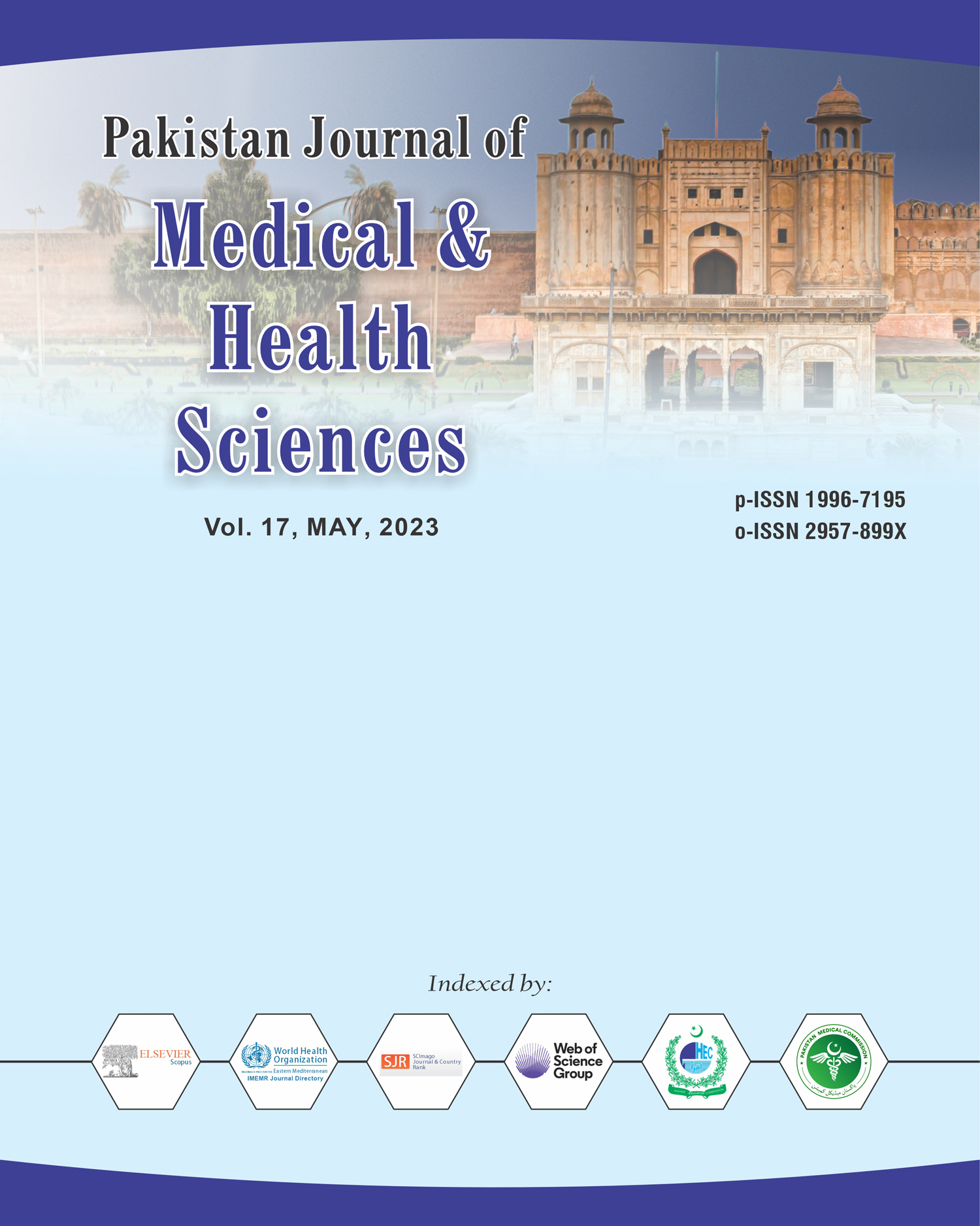Dengue Fever in Children: A Clinical and Laboratory Review with an Analysis of Treatment Results
DOI:
https://doi.org/10.53350/pjmhs2023175720Abstract
Objective: This study evaluated dengue fever in paediatric patients by looking at their clinical and laboratory characteristics as well as their treatment outcomes.
Methods: In this study 110 pediatric cases of dengue fever were included. The presence of dengue-specific IgM seroconversion and the detection of the non-structural protein NS1 were used to confirm laboratory-positive dengue cases. All data was analysed using SPSS 22.0.
Results: Among all, 70 (63.6%) cases were males and 40 (36.4%) cases were females. Mean age of the children was 8.5 years. One of the most prevalent initial signs was a high temperature. The most prevalent clinical signs were pleural effusion and hepatomegaly. The most prevalent finding on ultrasonography was gall bladder oedema. As per laboratory findings, thrombocytopenia and leucopenia was the most common. The use of colloids and crystalloids in their administration facilitated management.
Conclusion: In children, DF can show up in a variety of ways in the lab and in the clinic. To lessen the suffering and death caused by dengue in children, it is essential to treat the key phases appropriately according to clinical and laboratory findings.
Keywords: Severe dengue, Thrombocytopenia, Transaminases
Downloads
How to Cite
Issue
Section
License
Copyright (c) 2023 Siraj Nabi, Mian Rahmat Zeb, Asif Javeed, Sadaf Saeed Shami, Sajid Hussain Sherazi

This work is licensed under a Creative Commons Attribution 4.0 International License.


